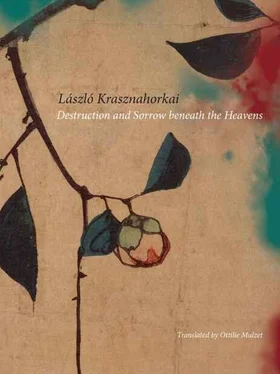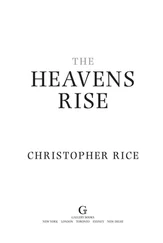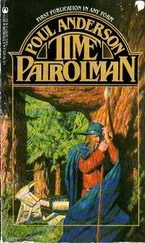pinghui. Yes. That’s what I’m saying. Not only Japanese but also Korean monks arrived here. Even during the Sui dynasty, there were Korean monks studying here. During the Tang era, Jianzhen, who had turned up here, first brought the news of our religion to Japan. Jianzhen studied here. His teacher was Hanyin. We venerate Hanyin as the most significant figure of the third generation to follow Zhiyi. Hanyin’s teacher was Master Zhan’en. Well, Jianzhen had acquainted all his monk companions with the numerous sutras he collected before he reached Japan. As a result, the Japanese monks began their pilgrimage. The most important event occurred in 803, when Saicho arrived and began studying. Later, he founded the Tiantai school in Japan. Saicho spent about 11 years here. But Kobo Daishi, another great Japanese Buddhist, the founder of the Shingon school, also turned up here. During the entire Tang era, innumerable Japanese monks came to us, at least two-thirds of all the Japanese monks. This indicates the significance of the Tiantai monastery in Japanese Buddhism.
Stein gives up and, deferring to the abbot, tries to proceed in the direction he is offering. He — lowering his head again — is very preoccupied with the figure of Zhiyi. In Zhiyi, he esteems that singular figure, the very first to confront the question of what we can accept as belonging to the Buddha’s original teachings. . The abbot, as soon as he hears this, immediately cuts short the interpreter.
pinghui. This comprises exactly the most important sutras of our school. Apart from the aforementioned Lotus Sutra, we should include the Daban Niepan Jing,[113] the Dazhidu Lun[114] and the Zhongguan Lun.[115] Zhiyi was the first to collect the essential sutras, and then later, in his footsteps, the great figures of the Tiantai school created the Sandabu or The Three Major Commentaries and the Wuxiaobu or The Five Minor Texts . The first part of the Sandabu is the most important for us.
There is something else which I must say to you. And I will say it now. In the beginning, there were greater differences of opinion between the northern and the southern Buddhists, theological differences of opinion. The northern Buddhists emphasized continual, persistently practised immersion, the unbroken meditation of ever-deeper concentration, the conviction that this lasting immersion, this persistent meditation would one day bring forth its own fruit, and that the monk, at the end of a long continuum, would reach nirvana. In contrast, the southern Buddhists believed they had found their leading principle exclusively in the sudden experience of the essential: they thought that nirvana could only be reached in an unexpected, irrational moment, one that cannot be prepared for. This is the significance of Master Zhiyi — he formulated the essence of this differentiation and combined the two schools. ( The abbot writes on a piece of paper ) The teachings of the southern Buddhists, who emphasize only sudden experience, is called chan ding,[116] whereas the tendency of the northern Buddhists is called zhi hui.[117] As you can see, each of these concepts is made up of two expressions. Master Zhi En used one character from each, thus expressing that the essence of unity is the equality of access of both the theoretical and the practical. He called this ding hui.[118] And this is how he wrote it. .
He encircles, from each of the two words, the characters for ding and hui, then draws an arrow pointing downward and writes the new word: ding hui.
At that point, however, from the other side of the office, on a desk piled high with papers, a cell phone begins to ring: with a long drawn-out jingling, it shouts to be picked up. Finally the young secretary-like monk picks it up, then, putting it down, says something to the abbot who motions to him to bring it over.
pinghui. Hello?. . Yes. . 16 pieces. . good. . How many?! OK, fine. So, Thursday?
He gives back the cell phone. He looks at Stein, scrutinizing him at length again, and suddenly continues his thoughts.
pinghui. Zhiyi was an extraordinarily important person. Since the time of Shakyamuni Buddha, there were innumerable tendencies operating in the name of Buddhism, and order had to be created among them. We can regard the activities of Zhiyi as that turning point after which it was possible to attempt to find unity among the variations. He was the one who indicated the path towards the determinations of the wuji bajiao.[119] Whoever, after Zhiyi, perceived and taught Buddhism within the unity of this guidance was able to easily find his own way and method.
The great problem is — Stein tries to direct the abbot closer to his own question — what is the so-called correct approach to the teachings of the Buddha. .
pinghui. Master Zhiyi summarized the remaining utterances of the teachings of the Buddha and classified them into five time periods and eight stages. The Buddha taught for 49 years. His teachings are immeasurably deep, so that if someone studies this through the system summarized by Zhiyi, he has a chance at reaching the correct approach. That is why we consider Master Zhiyi to be so great.
But how did Master Zhiyi arrive at the thought that there was a contradiction — to put it delicately — between the original teachings of the Buddha and the confusing variegation of Buddhist literature?
pinghui. There is no contradiction. At the very beginning, the Tiantai school came into being. Later on, only the Chan school was in operation. If, however, we look at the teachings of the Tiantai after this development, then we can state that the Tiantai also employs the knowledge of Chan. We must hold Chan in great esteem, because the Chan teachings were directly contained in the original teachings of the Buddha. The situation of today is such that, according to the teachings practised by the Tiantai, Chan and the theoretical basis are mutually complementary. The Chan sect does not respect this, and acknowledges only the experience of Chan. According to their school, it is not necessary to write down anything, the sutras have no significance. Chan has not left behind any writing.
There is no point to the conversation. Various people rush about the office, the cacophony is great. All the while, however, the abbot doesn’t move, as if awaiting further questions — Stein must decide where to go from here. It occurs to him that well, they could talk about what daily life was like in this renowned monastery. Venerable Abbot, he asks, Zhiyi lived here. The monastery was built only after his death. So where did he live? In a cave? Was there some kind of building here already during the life of Zhiyi, which then became the foundation of the monastery? And in general: What was Zhiyi’s life like? Moreover, if it is possible to ask: How did he spend his days?
But there is no hope that this cleric of great authority will ever give a reply to anything he is asked, and it occurs to Stein that there might be some difficulty with the translation, or some misunderstanding due to the dialect. The interpreter signals that he should not worry — whatever the abbot says is being faithfully translated.
pinghui. We wake up at three-thirty. This is followed by prayers in the temple until five-thirty. Then there is breakfast, then each monk attends to his own tasks: some read sutras, some meditate, some look after the affairs of the monastery, some take care of the hall. Lunch is at ten-thirty. From one o’clock to four-thirty the same schedule is followed. Evening prayers begin at five-fifteen. After that there is reading of sutras, meditation, each according to his own preference. In the monastery we also maintain a Buddhist school where, for the most part, we teach the Tiantai doctrines as well as general Buddhist theory.
Stein attempts a kind of forced joking phrase, and interrupts, asking: So do they go to sleep today at the same time as in the time of Zhiyi? The joke elicits a very pale response, because the abbot smiles for a moment but then — as if the smile had been cut in two — that mercilessly administrative severity returns to his gaze.
Читать дальше












